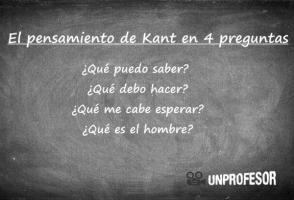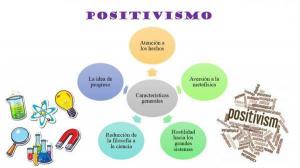Plato's theory of ideas
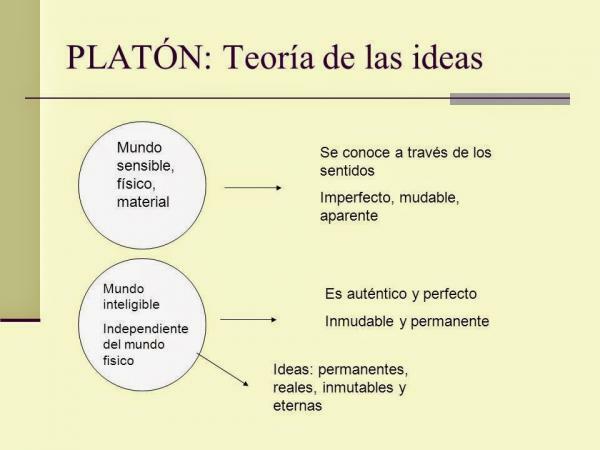
Image: Filolon
The theory of Ideas constitutes the center of Platonic philosophy, and around it revolves the whole Plato's thought. In this lesson from a TEACHER, we will briefly summarize Plato's Theory of Ideas, which is dealt with in the later works of the Greek philosopher, such as, "The Republic", "Phaedo" and "Phaedrus" and according to experts, it is a theory that he would have taken from his teacher Socrates. Do you want to discover a summary of the Theory of Ideas? Let's go there!
Index
- The Theory of Ideas and the division of reality
- The body and the soul in the Theory of Ideas
- The hierarchy of Ideas
The Theory of Ideas and the division of reality.
Plato duplicates reality and affirms the existence of two worlds: the sensible world and the intelligible world. This is what is known by the name of ontological dualism.
The sensible world, it is the physical world, the world of sensible and particular objects, and its knowledge is possible through the senses. It is the world of opinion, and of appearance, subject to change. For Plato, this world is nothing more than a copy of the real world, the intelligible world. Although the visible world, as the philosopher also calls it, also has reality insofar as it participates in the world of Ideas, imitating it. The sensible world is becoming.
The sensible world, has been manufactured by the Demiurge, which shapes matter taking the intelligible world as a model. This separation from the essence of things is what Aristotle's disciple will criticize in the "Metaphysics".
The intelligible world It is the world of ideas, of universals, of essences, and it is the only true one. It is the world of science, and it is only possible to access it through reason, through a process dialectical, ranging from lack of knowledge or ignorance, to the truth or knowledge of the ideas. This world is imperishable, unchanging, and eternal. The intelligible world constitutes the true being.
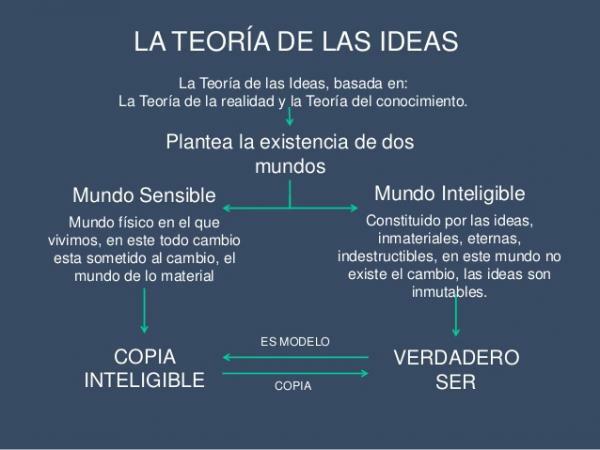
Image: Blog Brais - WordPress.com
The body and the soul in the Theory of Ideas.
Linked to Plato's ontological dualism is his anthropological dualism, which defends the existence of two parts in the human being: the body and the soul.
The BodyIt belongs to the sensible world, it is perishable and corruptible, subject to generation and destruction, changing and the soul is trapped in it. The body would therefore be a prison for the soul.
The soul, It is the most valuable part of the human being and before being trapped in a body, it lived in the world of ideas, but fell, and only with the death of the body will be released from it, and can return to the world of ideas. Because he already lived in the intelligible world, the soul, already knows the ideas. For this reason, for Plato, knowing is nothing more than remembering what the soul already knew but had forgotten when it fell to earth. This is called Reminiscence Theory, which appears in the "Phaedo".
- So what! Socrates replied: doesn't life also have its opposite, as waking has sleep?
- Without a doubt, said Cebes.
- What is this opposite?
- Death.
- These two things, if they are contrary, are they not born of each other, and are there not two generations between them or an intermediate operation that makes the passage from one to the other possible?
- How not?
- I, Socrates said, I will explain to you the combination of the two opposites of which I have just spoken, and the reciprocal passage from one to the other; you will explain the other combination to me. I say, then, on the occasion of sleep and wakefulness, that wakefulness is born from sleep and from wakefulness sleep; that the passage from wakefulness to sleep is numbness, and the passage from sleep to wakefulness is the act of awakening. Is this not very clear?
- Yes, very clear.
- Tell us in turn the combination of life and death. Don't you say that death is the opposite of life?
- Yes.
- And that one is born from the other?
- Yes.
- What is born then of life?
- Death.
- What is born of death?
- It is necessary to confess that it is life.
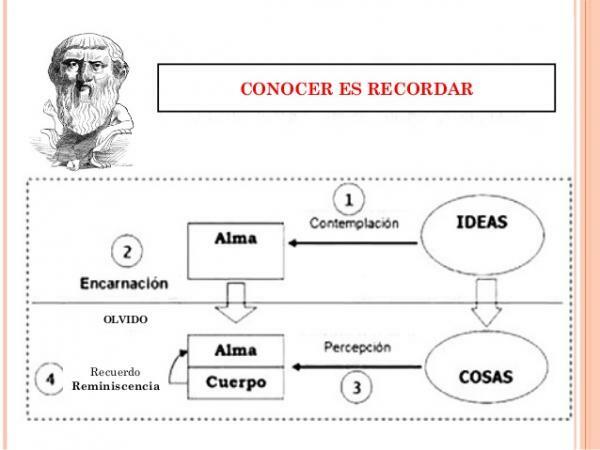
Image: SlideShare
The hierarchy of Ideas.
There is a hierarchy within the Ideas, being in the first position and dominating the rest, the idea of Well, which Plato identifies with the idea of Truth, Beauty or Justice. It is also usually identified with the To be, which constitutes the highest degree of reality, and is the cause of everything that exists. The last level would be occupied by the ideas of physical objects.
His defense of the existence of a communication between Ideas, led Aristotle to affirm that his teacher confused ideas with numbers, as Plato's followers did in the Academy.
Plato exposes the hierarchy of the Idea in the Republic, one of his most famous works, written with a clearly political character, as a protest to the condemnation of Socrates. In this work, Plato proposes the city of his ideal state, as well as the different forms of government and the different social classes within the polis, where each one has to take care of what corresponds to him, depending on the part of the dominant soul: rational soul (philosopher-king, prudence), irascible (warriors, courage) and concupiscible (people, temperance).
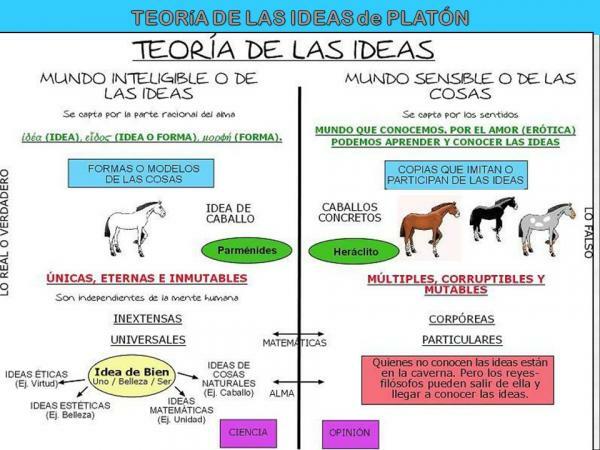
Image: SlidePlayer
If you want to read more articles similar to Theory of Ideas: Brief Summary, we recommend that you enter our category of Philosophy.
Bibliography
Giovanni Reale, Darío Antiseri. History of Philosophy, Vol. I. Editorial Herder

